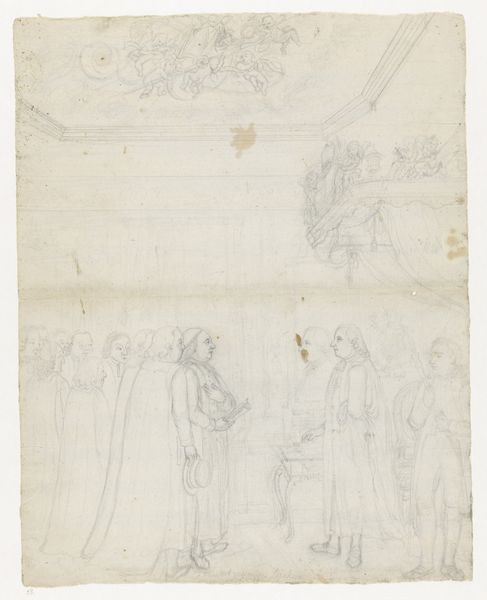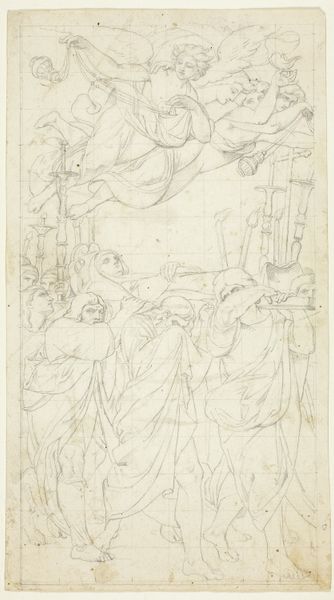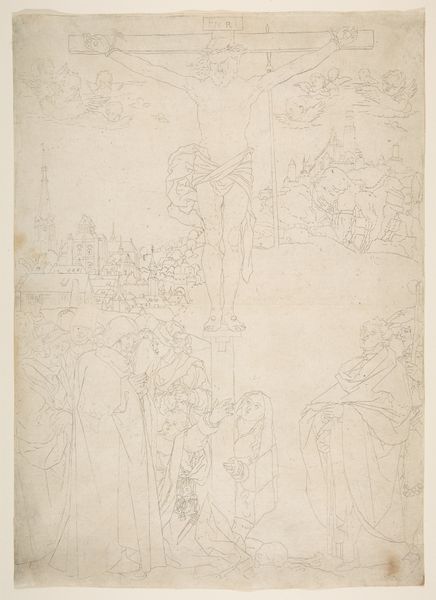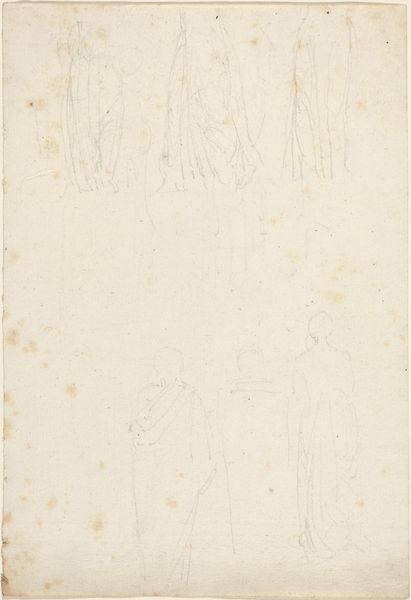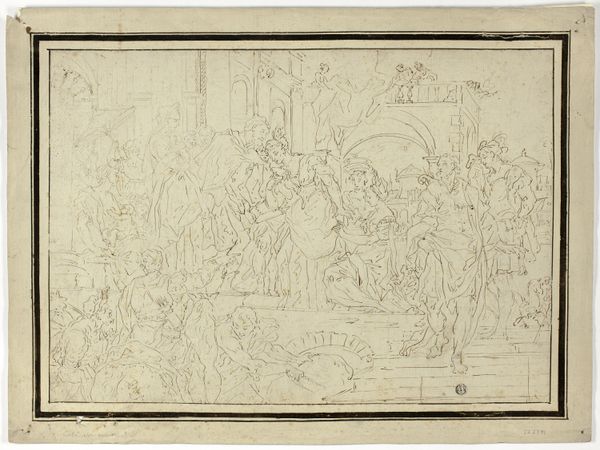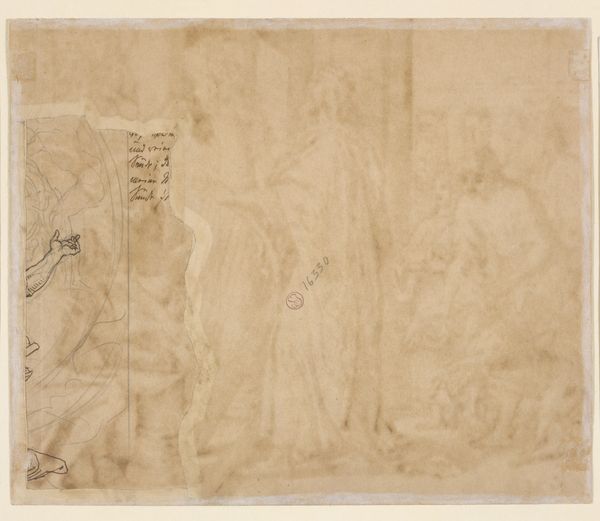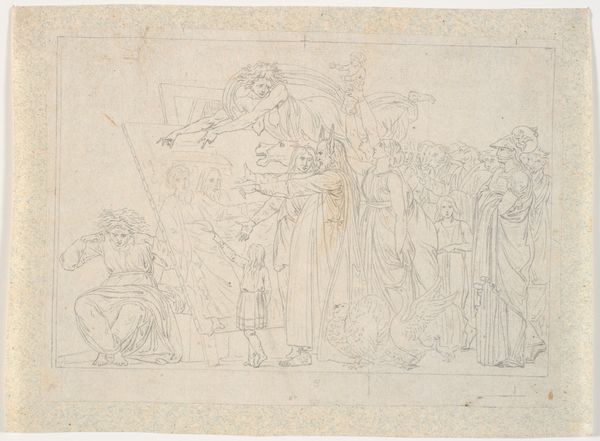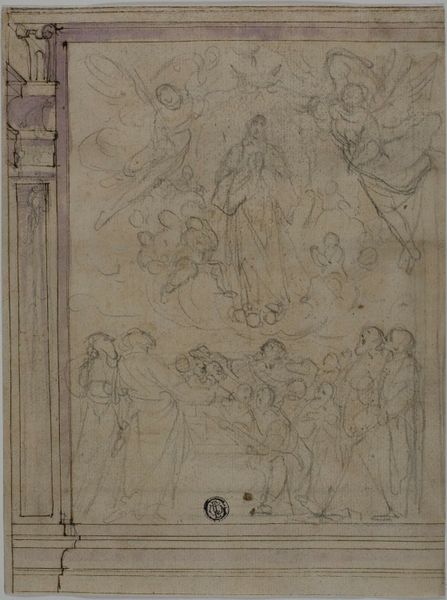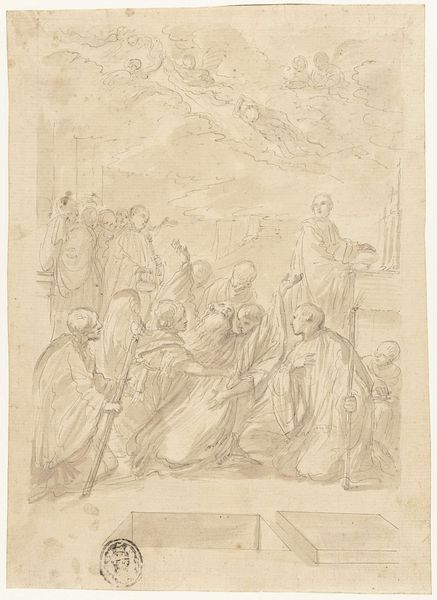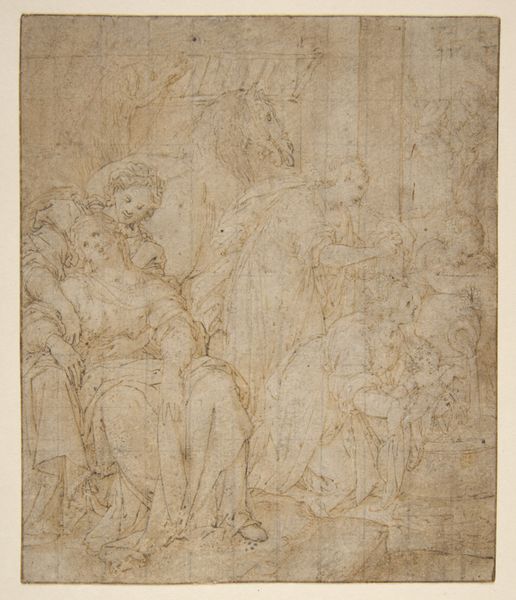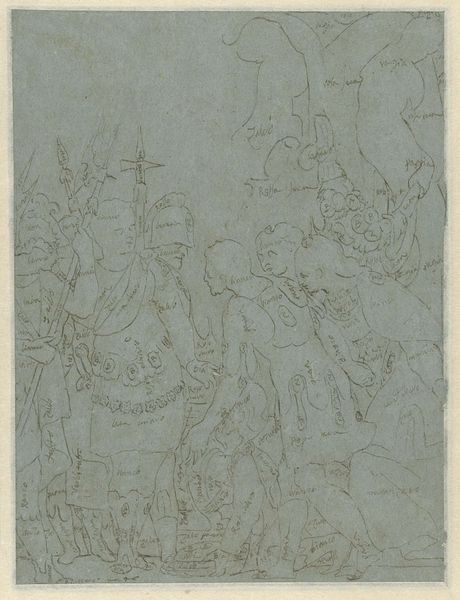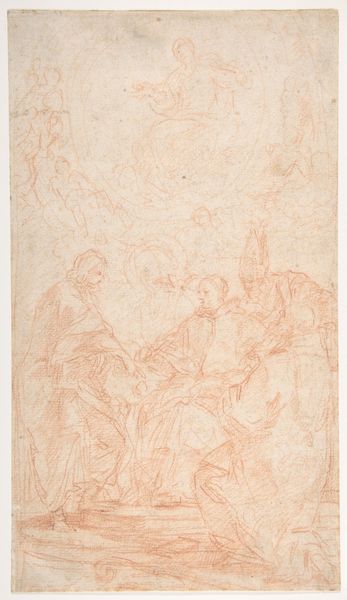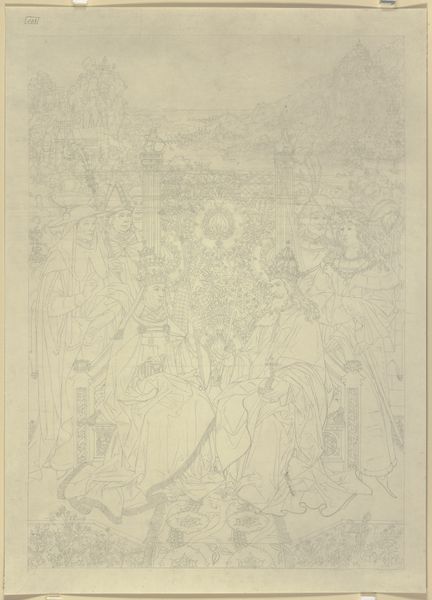
Adoration of the Christ Child, with Saints Joseph, Francis of Assisi, and Augustine, attended by Anton Galeazzo Bentivoglio and Alessandro Bentivoglio c. 1820
0:00
0:00
drawing, print, paper, graphite
#
portrait
#
drawing
#
allegory
# print
#
etching
#
figuration
#
paper
#
11_renaissance
#
graphite
#
history-painting
#
academic-art
#
italian-renaissance
Dimensions: 224 × 198 mm
Copyright: Public Domain
Editor: We're looking at "Adoration of the Christ Child, with Saints Joseph, Francis of Assisi, and Augustine, attended by Anton Galeazzo Bentivoglio and Alessandro Bentivoglio," an etching, graphite, and paper print from around 1820, by Francesco Francia. It has this airy, sketched feel that almost makes it seem like we’re peering into the artist’s mind as they're developing the idea. It's like catching a glimpse behind the scenes. What grabs your attention when you look at this piece? Curator: What tickles me most is how unfinished it feels, almost like catching a secret whispered in graphite. Imagine Francia, not just depicting devotion, but wrestling with it on the page. You see these hazy figures, saints shoulder-to-shoulder with mortals – Anton and Alessandro, those lucky devils! Are they adoring, or just… there? What do you reckon it means to be “attended by” in this divine tableau? Were they simply fashionable extras, or is there a deeper dance between the sacred and the self? Editor: Fashionable extras! I hadn't considered that angle. So, it's not just about the religious figures; the inclusion of those specific individuals says something about status and patronage at the time? Curator: Precisely! Who gets a seat at the divine dinner party says a lot, doesn't it? And notice the etching… It's almost a drawing, blurring the lines between sketch and final piece. Makes you wonder: Was Francia preparing for something grander? Or did he find a quiet contentment in this almost ethereal incompleteness? Do you think it's this unfinished state that allows *us* to become collaborators in its creation? Editor: I think you're spot on. The sketchy quality invites interpretation, almost demands it. Seeing the raw artistic process makes the scene feel so much more human, accessible even. Curator: Exactly! A little less holier-than-thou and a bit more, "Hey, we're all trying to figure this faith thing out," you know? A lovely dance, truly. I am always struck by how the personal reflection becomes so powerful when mingled with history. Thanks for prompting this conversation, I'll now see the work very differently.
Comments
No comments
Be the first to comment and join the conversation on the ultimate creative platform.
